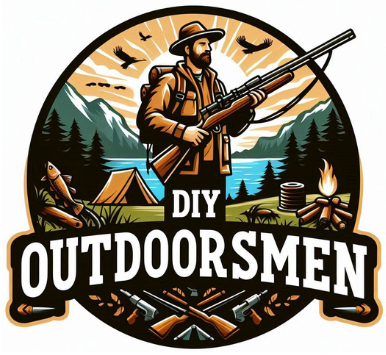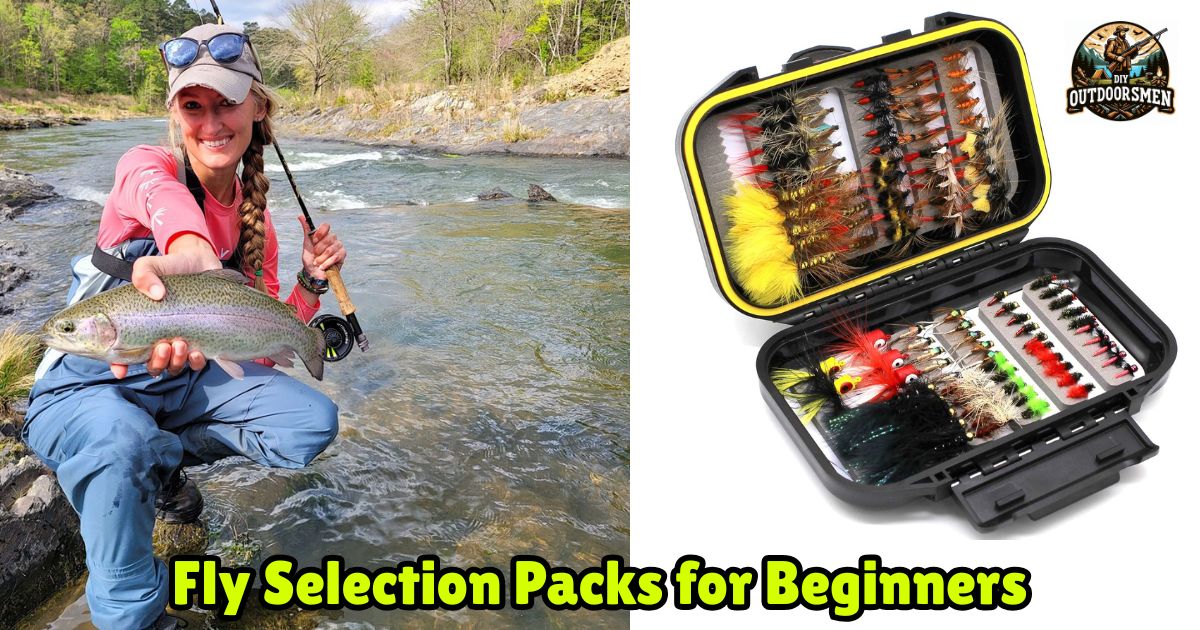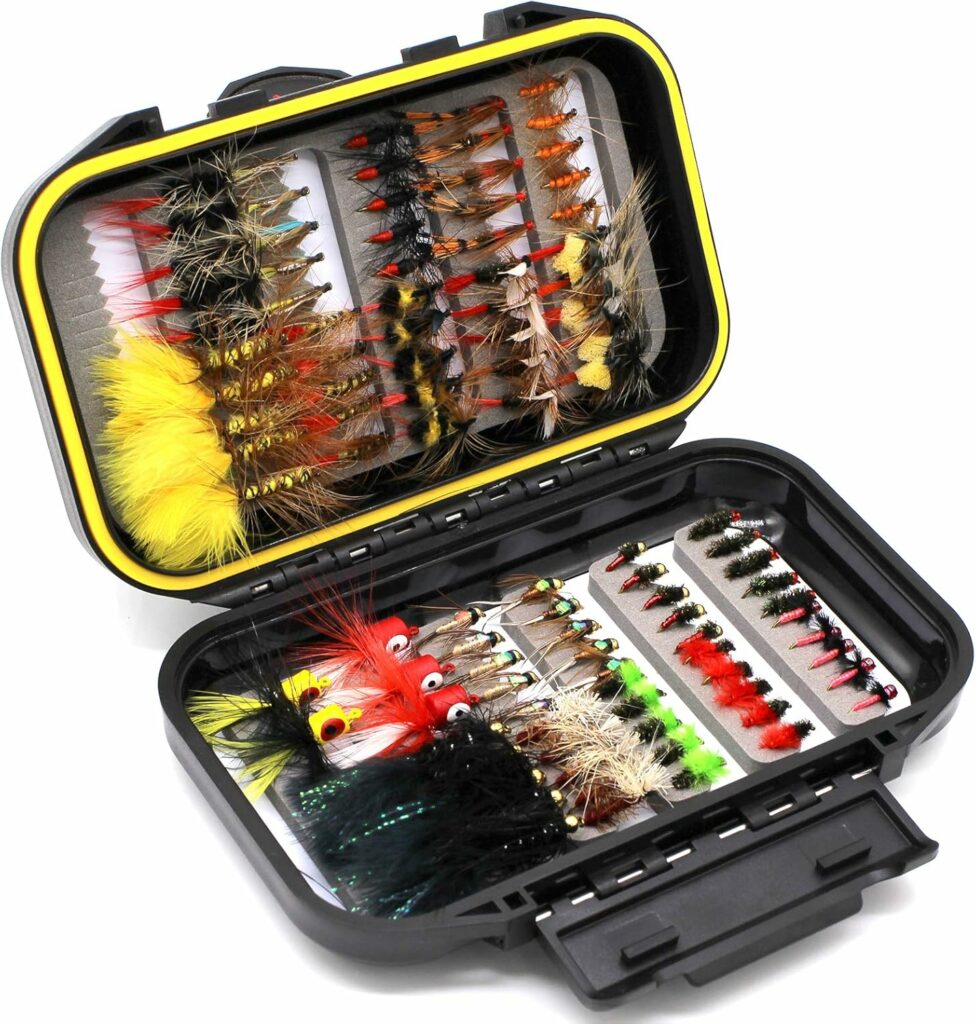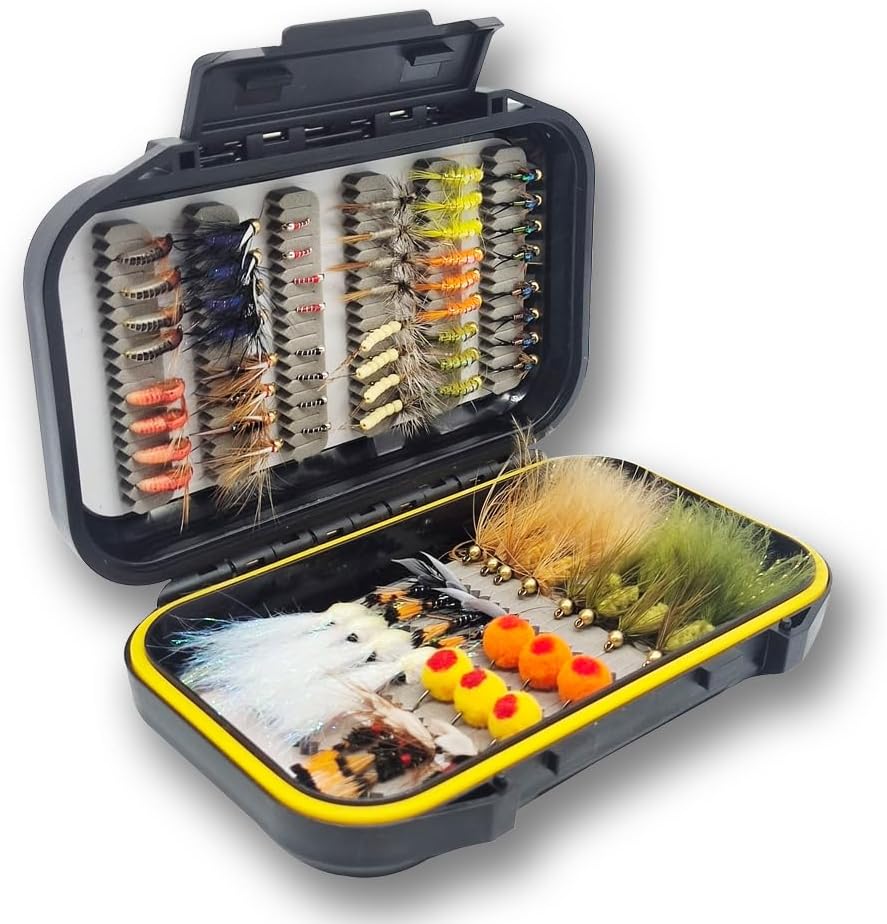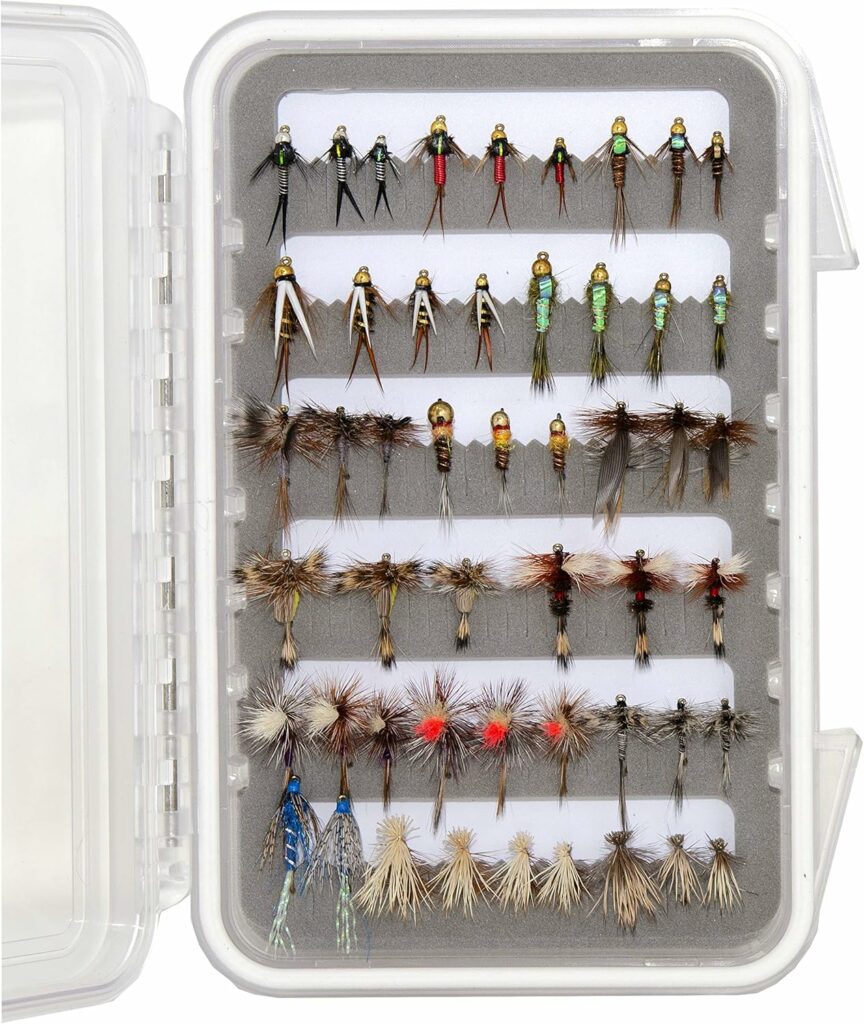Contents
- 1 What Makes Beginner-Friendly Fly Selection Packs Stand Out?
- 2 Understanding the Basics of Fly Selection
- 3 A Closer Look at Types of Flies in Fly Fishing Beginner Packs
- 4 How to Use a Fly Selection Pack Effectively
- 5 Pairing Flies with the Right Tippet and Leader
- 6 Other Key Considerations When Using Fly Selection Packs
- 7 Common Questions About Beginner Fly Packs
- 8 Tips for Maximizing Success with Fly Packs
Starting the path to fly fishing comes with its share of excitement and anxieties. Beginner-friendly fly selection packs make things a whole lot easier. I know how challenging it can feel when faced with display racks full of flies at the shop, each in various sizes, colors, and names you may have never heard before.
QUICK LOOK: Tips for Using Fly Assortment Packs
- Read the included tips card thoroughly. These explain how and when to use each fly.
- Practice your basic knots at home before hitting the stream. Habitat’s instructional videos helped me a lot.
- Store flies in a dry fly box and rinse them if used in dirty water, so they last longer.
- Connect with your local fishing community. Forums, Habitat’s online resources, or local fly fishing groups all help guide and encourage new anglers.
- Don’t hesitate to ask questions in local shops. Most anglers are happy to share tips about which flies from your Habitat pack seem to be working best in that area at the moment.
- Try to fish different types of water – fast riffles, slow pools, shaded runs – this helps you learn how to switch flies and presentations for each condition, making the most out of your beginner pack.
These packs put together a thoughtful assortment designed to cover a range of fishing scenarios, so I don’t spend hours guessing what might work. Here, I’m sharing what makes these kits practical, how to use them, and my experiences trying them out for the first time.
What Makes Beginner-Friendly Fly Selection Packs Stand Out?
When I first started, one of my biggest questions was, “How do I know which flies to buy?” The convenience of a curated fly pack eased my stress. These packs usually come with flies selected to match common insects found in freshwater streams and lakes, covering the different life cycles and forms that fish target.
Fly assortment packs usually divide flies into three main groups: dry flies, nymphs, and streamers. Each type serves a unique purpose, and I quickly realized that having a few from each group opened up my fishing options. Most Fly assortments are labeled clearly, so I know exactly which fly is which, and when it’s best to use them. This is perfect for anyone not yet familiar with all the fly fishing lingo.
Understanding the Basics of Fly Selection
Good fly selection means matching what fish are already feeding on. I learned the phrase “match the hatch,” which means picking a fly that looks like the current insects in or on the water. Even with beginner packs, that idea stays at the core. Fly Fishing fly packs are built around this standard, offering versatile options for various water conditions.
Observing Nature
Observation plays a key role. When I arrive at a stream, I slow down and look for activity. Are insects sitting on rocks, flying above the surface, or swimming underneath? Even with a beginner’s pack, making a careful choice based on what’s around me helps. Sometimes I check what’s under wet stones or use a simple aquarium net to scoop up bugs for a closer look, then match the closest fly from the pack.
Matching Size, Color, and Shape
The main points I keep in mind are size, color, and shape. A good fly assortment pack structures their fly selection packs to give me a mix of each category. Even if I can’t find an exact match, just getting close is often enough to get bites, especially for beginner-friendly waters where fish are less selective.
A Closer Look at Types of Flies in Fly Fishing Beginner Packs
Beginner fly assortment packs almost always include a mix of the following, which covers most fishing situations I face as a beginner:
- Dry Flies: These float on the water, resembling adult insects. The Parachute Adams and Elk Hair Caddis are usually included; these are solid bets when trout are feeding at the surface.
- Nymphs: Nymphs sink below the surface and look like immature insects. In my Habitat starter pack, I found Pheasant Tail Nymphs and Hare’s Ear Nymphs. These catch fish even when nothing seems to be hatching at the surface.
- Streamers: Larger flies that mimic minnows or leeches. The Woolly Bugger is a staple, included in almost every pack I’ve seen. I use these when trying for larger trout or in faster, deeper water.
Good fly assortment packs usually provide flies in a range of sizes, so I can try smaller ones for clearer water and more wary fish, or go up in size when things are murkier or I’m hunting for bigger catches.
One additional detail I appreciated from beginner fly assortment packs is their inclusion of a few attractor patterns. These don’t necessarily look like a specific insect, but their bright colors and shapes sometimes entice fish simply out of curiosity. That little bit of extra variety has saved the day for me when nothing else seemed to work.
How to Use a Fly Selection Pack Effectively
Having the pack is half the step. The real key is understanding how to use each fly. Here’s what works for me:
- Start by observing: Spend a few minutes by the water looking for clues about what the fish are eating.
- Pick a starting fly: If I see fish rising, I’ll try a dry fly. If the action is quiet on top, I move to nymphs.
- Stay flexible: If nobody’s biting after about twenty minutes, I change flies or experiment with size and color.
- Pay attention to presentation: How my fly lands and drifts on the water matters. Habitat’s lighter dries are easy to cast delicately, which I find helpful in calm conditions.
The majority of beginner fly assortment packs come with simple fly identification cards, so I never have to guess what fly I’m tying on. This was especially helpful for me early on when I struggled to tell one fly from another.
Pairing Flies with the Right Tippet and Leader
Tippet size and fly size work together. Bigger, heavier flies go with thicker tippet so they don’t snap off on a cast. Smaller flies need a finer tippet to look convincing and drift naturally. Here’s what I stick with, based on guide recommendations and my own experience:
- Dry flies and small nymphs: 5X or 6X tippet usually does the trick, especially on clear streams.
- Medium streamers or larger nymphs: 3X or 4X tippet handles these and stands up to bigger fish.
- Use the “rule of 3”: Divide the fly size by 3 to estimate tippet (so a size 12 fly pairs well with 4X tippet).
Fly fishing fly assortment packs often recommend good pairings right on the fly labels, which takes the guesswork out for me. Don’t forget, if you’re unsure about tippet and leader combinations, it helps to check with local anglers or online communities to get a feel for what works best in your area. Over time, this builds your instincts for the right setup.
Other Key Considerations When Using Fly Selection Packs
Success in fly fishing isn’t only about the flies. I pay attention to factors like water clarity, current speed, and recent weather. A good fly assortment pack will be built to be adaptable, but here’s what I’ve found helps:
- Clear, slow water: I stick with small, natural-looking flies and fine tippet.
- Fast or murky water: I go up a size in fly and tippet, and use patterns with added weight or flash.
- Fish behavior: If trout are picky, I get as close as possible to the insects I see around. Sometimes, just switching from a shiny nymph to a more natural one gets results.
Fly makers keep adaptability in mind, designing their beginner packs with plenty of choices so I’m not left stuck out on the stream. I also try to fish during low-light periods like early morning or late evening, when fish are more likely to bite, regardless of pack contents.
Developing Confidence
Confidence grows with familiarity. Over time, I’ve started to learn which flies work best in my local waters. Local angler’s guidance may have nudged me in the right direction, but personal notes help, too. I jot down what worked (and didn’t) in a pocket notebook after each trip. Creating a habit of taking quick notes speeds up my progress and helps me make better choices each time I get back out there.
Common Questions About Beginner Fly Packs
Here are some questions I had early on, and what I’ve found helps:
What if the pack doesn’t include a local favorite fly?
I sometimes supplement with one or two region-specific patterns. Local fly shops are always willing to suggest specific additions if needed. Talking with more experienced anglers also helps me track down the right choices for special situations.
How long does a pack last?
If I dry my flies after use and keep them organized, they last quite a while. I replace lost or badly chewed-up flies as needed; Most manufacturers sell individual replacements, which is really convenient.
Do I need extra equipment?
A pack of flies, a fly box, floatant for dry flies (so they keep floating), and some spare tippet covers my basics. Fly makers often bundle these accessories in beginner kits, which saves time on my first purchase.
Tips for Maximizing Success with Fly Packs
Some practical steps make the most of these kits:
- Read the included tips card thoroughly. These explain how and when to use each fly.
- Practice your basic knots at home before hitting the stream. YouTube instructional videos helped me a lot.
- Store flies in a dry fly box and rinse them if used in dirty water, so they last longer.
- Connect with your local fishing community. Forums, Fish & Game Department online resources, or local fly fishing groups all help guide and encourage new anglers.
- Don’t hesitate to ask questions in local shops. Most anglers are happy to share tips about which flies from your fly assortment pack seem to be working best in that area at the moment.
- Try to fish different types of water – fast riffles, slow pools, shaded runs – this helps you learn how to switch flies and presentations for each condition, making the most out of your beginner pack.
Using a quality beginner selection fly assortment pack has made my learning curve feel much less steep. With just a little observation and some trial and error, I was bringing in fish fairly quickly. The organized variety, quality materials, and helpful beginner resources have given me confidence and made fly fishing more approachable.
If you’re looking to get started, I’d suggest starting with one of these packs. It’s a simple way to enjoy success and fun on the water, even before you’ve memorized every hatch chart or fly name out there.
Most Recent Articles:
- Complete Guide On Tracking Game Animals
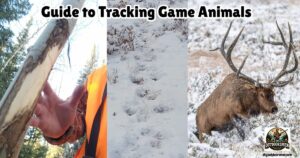
- DIY 4-Step Guide To Field Dressing And Quartering A Deer

- Night Vision Binoculars For Nocturnal Hunting
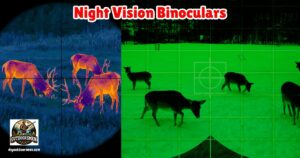
- The Science Behind Camouflage Patterns For Deer Hunting

- Binocular Accessories For Hunters

- 9 Tips for Using Trail Cameras To Track Deer Movements

As always, stay safe, enjoy the journey, and please try to leave it cleaner than you found it. If you have any comments, questions, ideas, or suggestions, please leave them in the comment section below, and I’ll get back to you ASAP. You can follow us on YouTube: Man Art Creations for videos of our DIY Adventures.
P.S. Thanks so much for checking out our blog; we really appreciate it. Just so you know, we may receive a commission if you click on some of the links that appear on our site. This helps us keep our content free and up-to-date for everyone. We appreciate your support!
